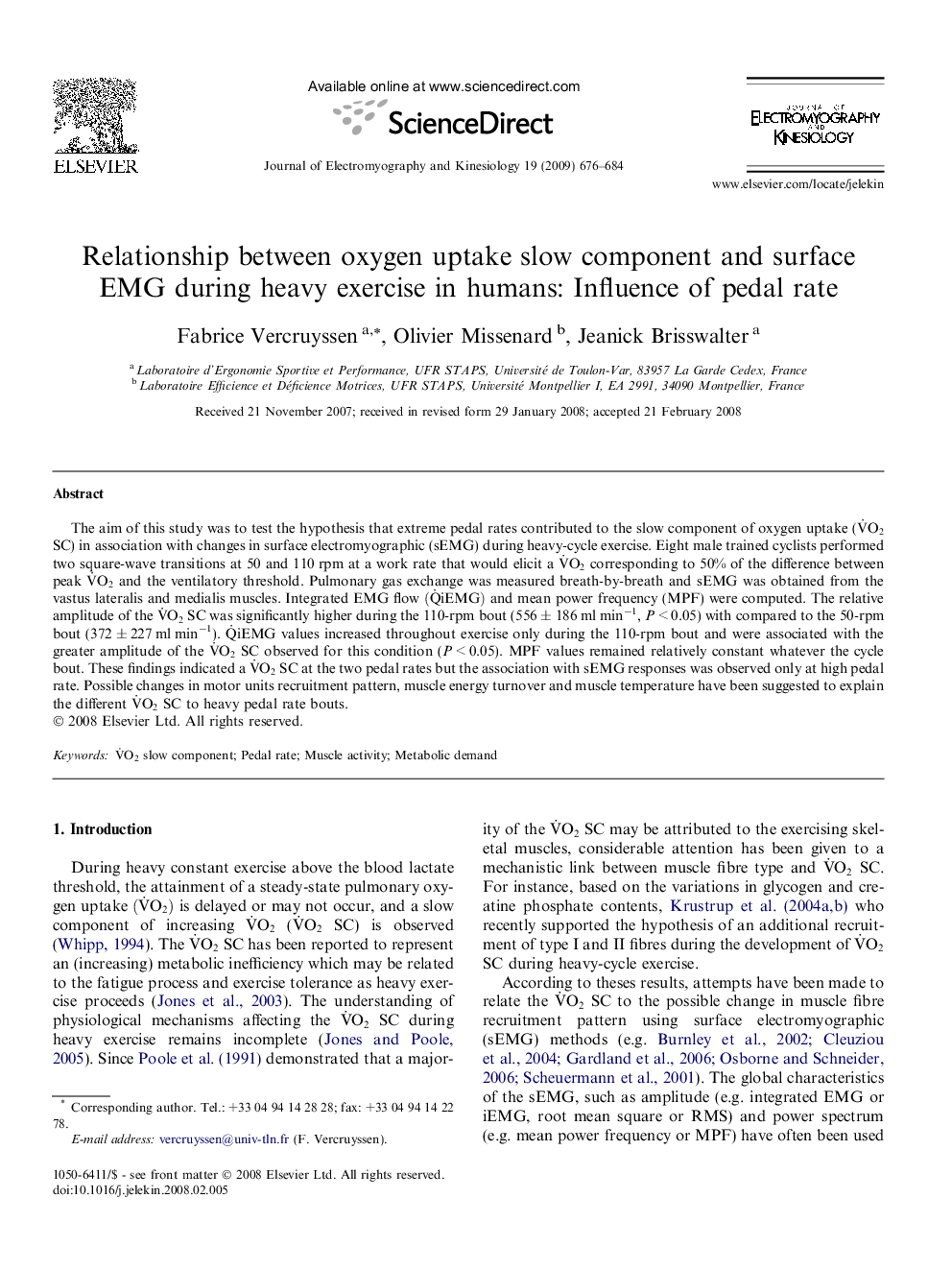| Article ID | Journal | Published Year | Pages | File Type |
|---|---|---|---|---|
| 4065457 | Journal of Electromyography and Kinesiology | 2009 | 9 Pages |
The aim of this study was to test the hypothesis that extreme pedal rates contributed to the slow component of oxygen uptake (V˙O2 SC) in association with changes in surface electromyographic (sEMG) during heavy-cycle exercise. Eight male trained cyclists performed two square-wave transitions at 50 and 110 rpm at a work rate that would elicit a V˙O2 corresponding to 50% of the difference between peak V˙O2 and the ventilatory threshold. Pulmonary gas exchange was measured breath-by-breath and sEMG was obtained from the vastus lateralis and medialis muscles. Integrated EMG flow (Q˙iEMG) and mean power frequency (MPF) were computed. The relative amplitude of the V˙O2 SC was significantly higher during the 110-rpm bout (556 ± 186 ml min−1, P < 0.05) with compared to the 50-rpm bout (372 ± 227 ml min−1). Q˙iEMG values increased throughout exercise only during the 110-rpm bout and were associated with the greater amplitude of the V˙O2 SC observed for this condition (P < 0.05). MPF values remained relatively constant whatever the cycle bout. These findings indicated a V˙O2 SC at the two pedal rates but the association with sEMG responses was observed only at high pedal rate. Possible changes in motor units recruitment pattern, muscle energy turnover and muscle temperature have been suggested to explain the different V˙O2 SC to heavy pedal rate bouts.
